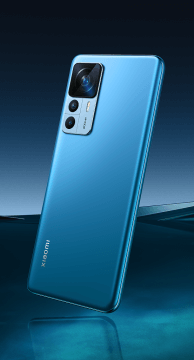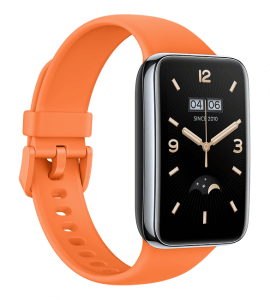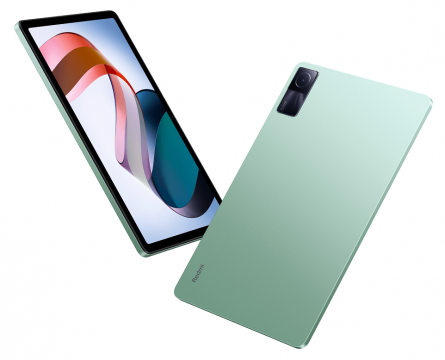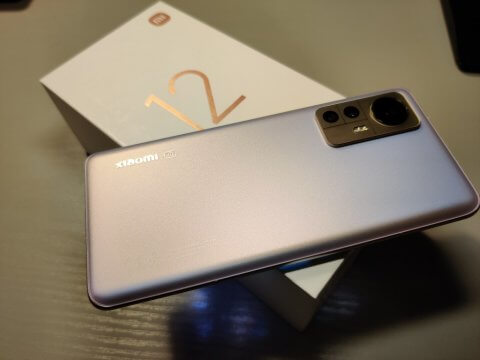 Xiaomi‘s first launch of 2022 is the new Redmi Note 11 series with a total of four phones, two sizes and all sharing the same design language. Xiaomi’s Note models are a very popular series with over 240 million Notes sold so this will see Xiaomi well into 2022 and with prices from US$179 through to $379, there’s a phone for everyone.
Xiaomi‘s first launch of 2022 is the new Redmi Note 11 series with a total of four phones, two sizes and all sharing the same design language. Xiaomi’s Note models are a very popular series with over 240 million Notes sold so this will see Xiaomi well into 2022 and with prices from US$179 through to $379, there’s a phone for everyone.
Announced today were four mid-range phones with the best stealing a few flagship features. Starting at the top and working down, Xiaomi showed off the:
- Note 11 Pro 5G
- Note 11 Pro
- Note 11S
- Note 11.
Sharing the same look, the 11 Pro 5G and 11 Pro are the bigger phones with 6.67″ screens compared to the 6.43″ displays of the 11S and 11. The style is very much on-trend with flat sides (aka flat frames) rather than the normal Android curves.
 Looking at the 11 Pro phones first, they look great and come with glass backs in three colours: Graphite Gray, Polar White, Atlantic Blue (Pro 5G) and Star Blue (Pro). The Atlantic Blue has a lovely wave effect to it.
Looking at the 11 Pro phones first, they look great and come with glass backs in three colours: Graphite Gray, Polar White, Atlantic Blue (Pro 5G) and Star Blue (Pro). The Atlantic Blue has a lovely wave effect to it.
Taking a look at the camera array while round the back, the Pro 5G has a triple camera array with a massive 108 MP main camera, a 118° ultrawide 8MP lens and a 2 MP macro lens. The Pro is similar but includes an additional depth sensor for bokeh effects. And of course, both models have a 16 MP selfie camera round the front.
Turning to the 6.67″ display, it’s an AMOLED FHD+ screen with 12,000 nits max brightness,120 Hz refresh rate and 360 Hz touch sampling. Simply that means you can play fast action games outside and it’ll be super smooth. The Corning Gorilla Glass screen comes with all the expected eye protections such SGS Eye Care Certification.
Inside the Redmi Note 11 Pro 5G is a Snapdragon 695 – it’s a well respected leading mid-range processor that keeps the 11 Pro 5G ticking over nicely. For the non-5G 11 Pro, it’s a MediaTek Helio G96. Again, a solid mid-range CPU but without 5G features.
In terms of storage, the two phones max out at 8 GB RAM, 128 GB storage and 1 TB of expandable storage. Dual speakers and a headphone jack round out the media features.
Keeping it all going is a 5000 mAh battery which should give a 2 days of typical phone use. Equipped with turbo charging at 67 W, 15 minutes of charge should be enough to get an 11 Pro and Pro 5G through the day. Both phones use the same MMT battery technology to keep the battery cool while charging. And there’s a charger included in the box!
 Pricewise, for the Redmi Note 11 Pro 5G (and there will be regional variations on the price)
Pricewise, for the Redmi Note 11 Pro 5G (and there will be regional variations on the price)
- 6 GB + 64 GB – US$329
- 6 GB + 128 GB – $349
- 8 GB + 128 GB – $379
Redmi Note 11 Pro
- 6 GB + 64 GB – US$299
- 6 GB + 128 GB – $329
- 8 GB + 128 GB – $349
And for the especially thrifty, there’s an early bird $30 discount on 16th & 17th February at Aliexpress.
Turning to the smaller Redmi Note 11S and 11, it’s very much the same design language with the devices coming in Graphite Gray, Twilight Blue, Pearl White (11S) and Star Blue (11).
The 11S has the same camera setup as the Pro, with 108 MP main shooter, 118° ultrawide and macro lenses plus the depth sensor. The 11 drops the pixel count on the main shooter to 50 MP, but still retains the UW and macro lenses. The selfie camera on the Note 11S is 16 MP but only 13 MP on the Note 11.
For both devices, the display is an AMOLED FHD+ screen with a 90Hz refresh rate and 10,000 nits brightness covered in protective Gorilla glass. Inside, the Note 11S has the same chipset as the Pro in the shape of the MediaTek Helo G96. On the other hand, the Note 11 returns to the Qualcomm fold with the Snapdragon 680.
It’s the same 5,000 mAh battery across the whole range, though the 11S and 11 have to be satisfied with 33 W fast charging that will charge to 100% in under an hour. That’s still pretty nippy. The fast charger is included here too.
Other features include dual stereo speakers, 3.5 mm jack and expandable storage to 1 TB.
Pricewise, for the Redmi Note 11S (and as before there will be regional variations on the price)
- 6 GB + 64 GB – US$249
- 6 GB + 128 GB – $279
- 8 GB + 128 GB – $299
Redmi Note 11
- 4 GB + 64 GB – US$179
- 4 GB + 128 GB – $199
- 6 GB + 128 GB – $229
Like the Note 11 Pros, there will be an early bird discount of $20 at AliExpress on 28th & 29th January.
Overall, the Xiaomi Redmi Note 11 series has a great deal to offer in the mid-range. Strong design, high MP main camera, fast charging, decent processor. There’s a much to recommend here.
 It might be the season to be jolly but it also seems to be the season for new stores. Following on from Nothing’s new bricks’n’mortar shop in London last weekend, Xiaomi are opening a new place in Birmingham, England.
It might be the season to be jolly but it also seems to be the season for new stores. Following on from Nothing’s new bricks’n’mortar shop in London last weekend, Xiaomi are opening a new place in Birmingham, England. In addition to usual smartphones, tablets, earbuds and smart watches, Xiaomi produce a wide range of other gadgets and gear; everything from luggage and scooters to air purifiers and air fryers. The Xiaomi portfolio is amazingly wide – it’s a gadget-lover’s heaven.
In addition to usual smartphones, tablets, earbuds and smart watches, Xiaomi produce a wide range of other gadgets and gear; everything from luggage and scooters to air purifiers and air fryers. The Xiaomi portfolio is amazingly wide – it’s a gadget-lover’s heaven.





















